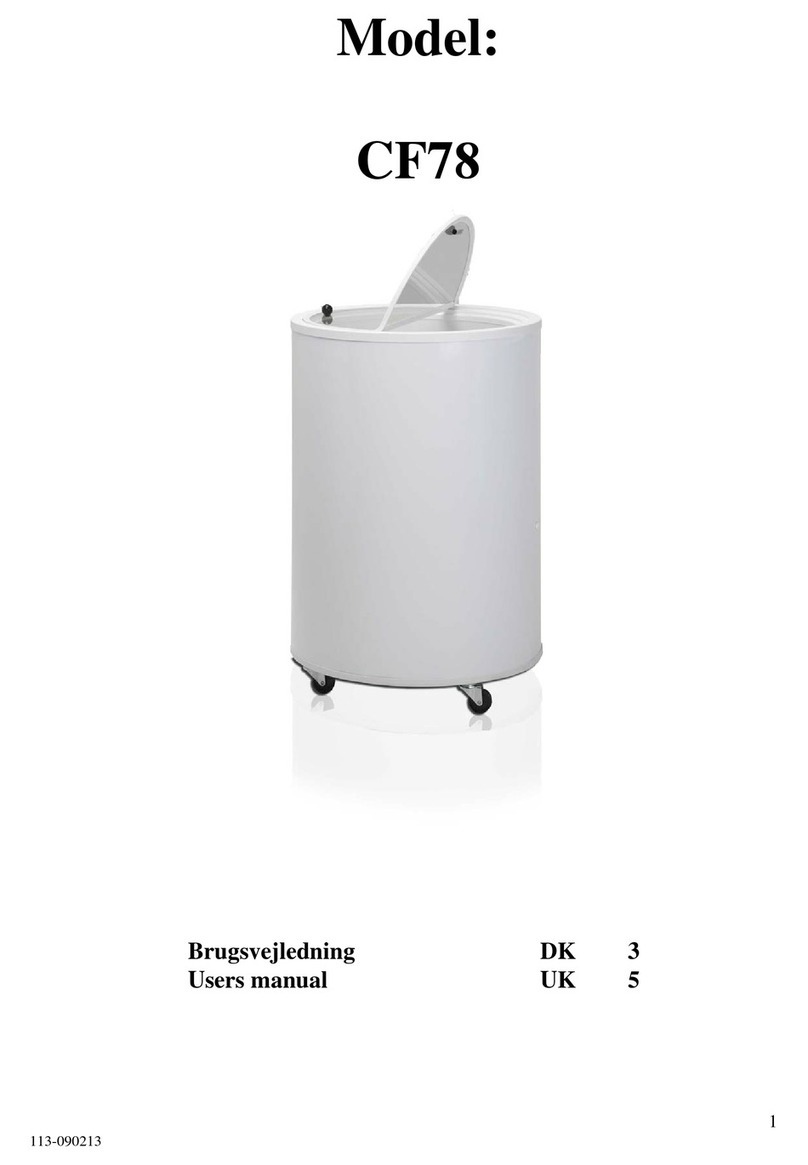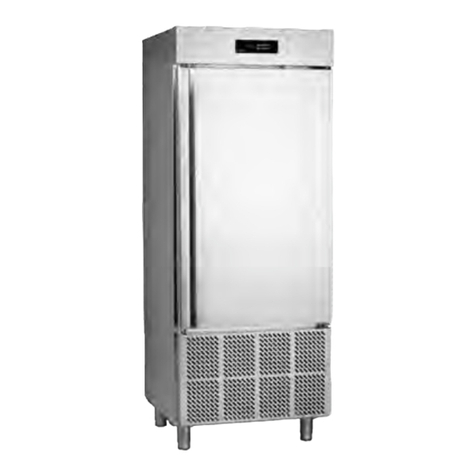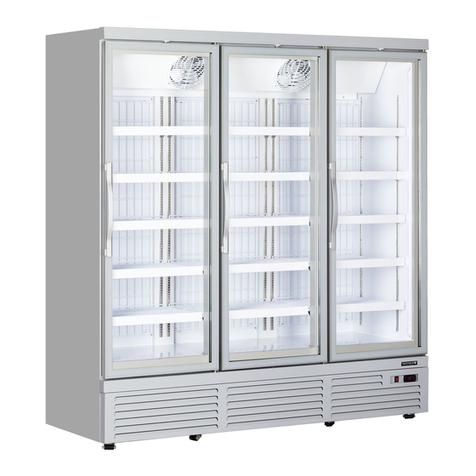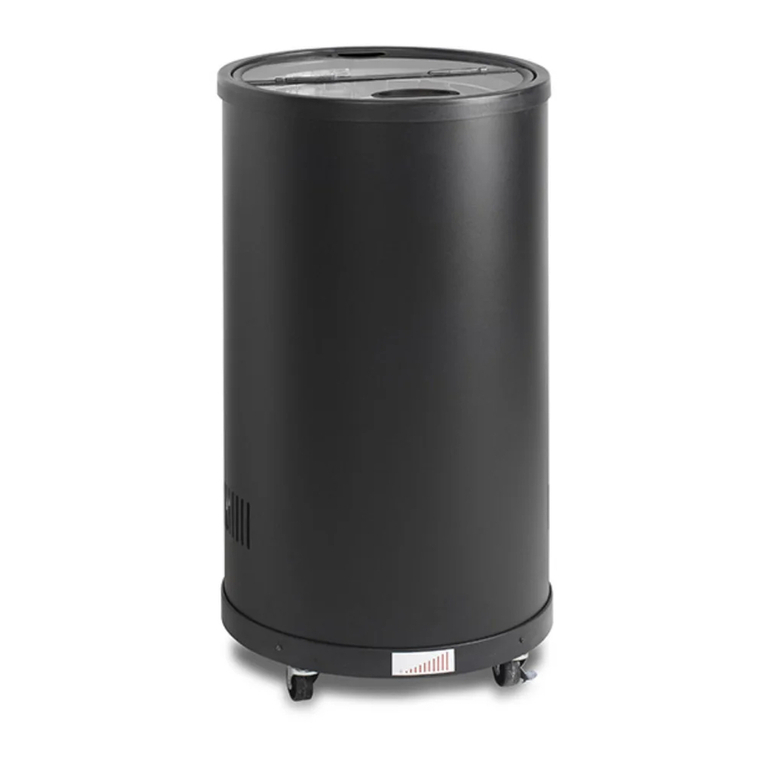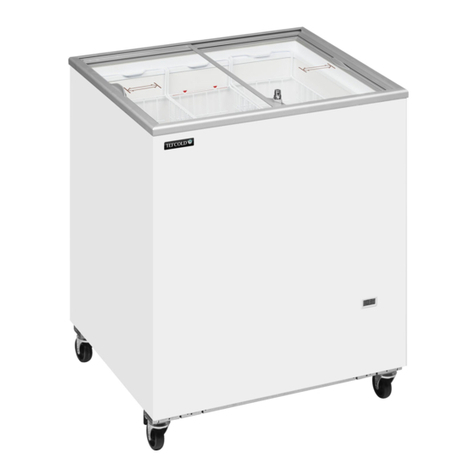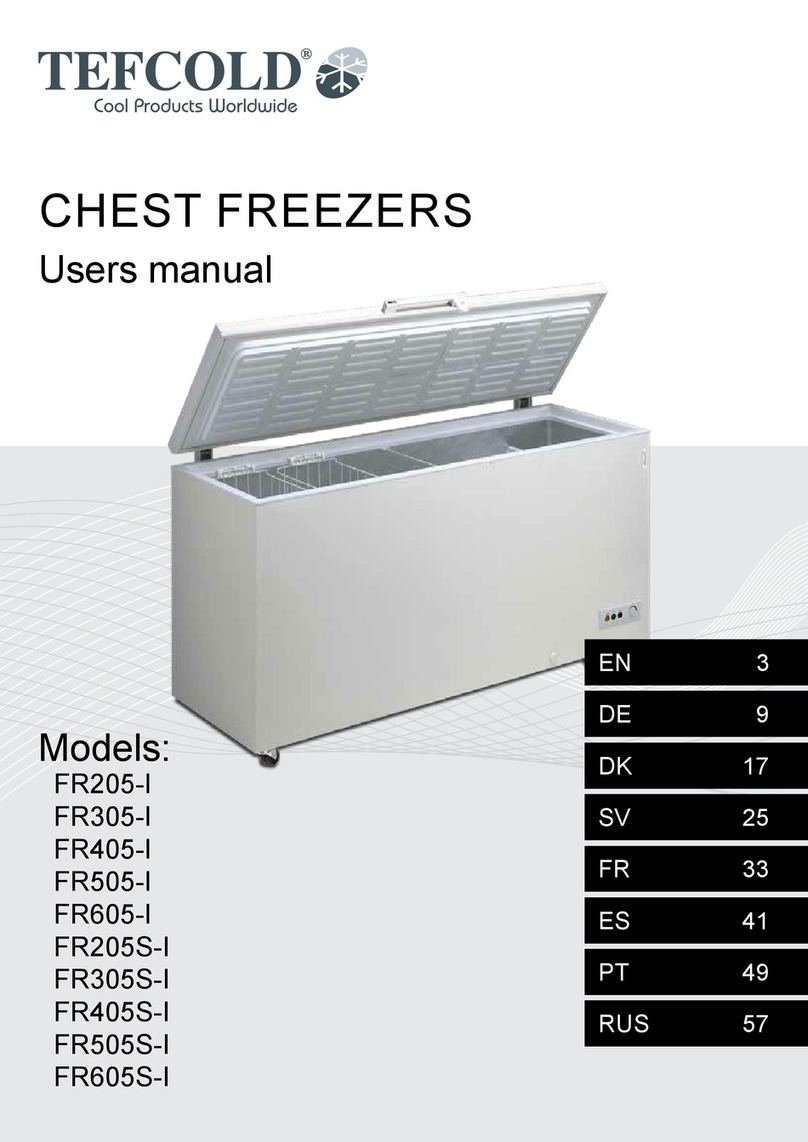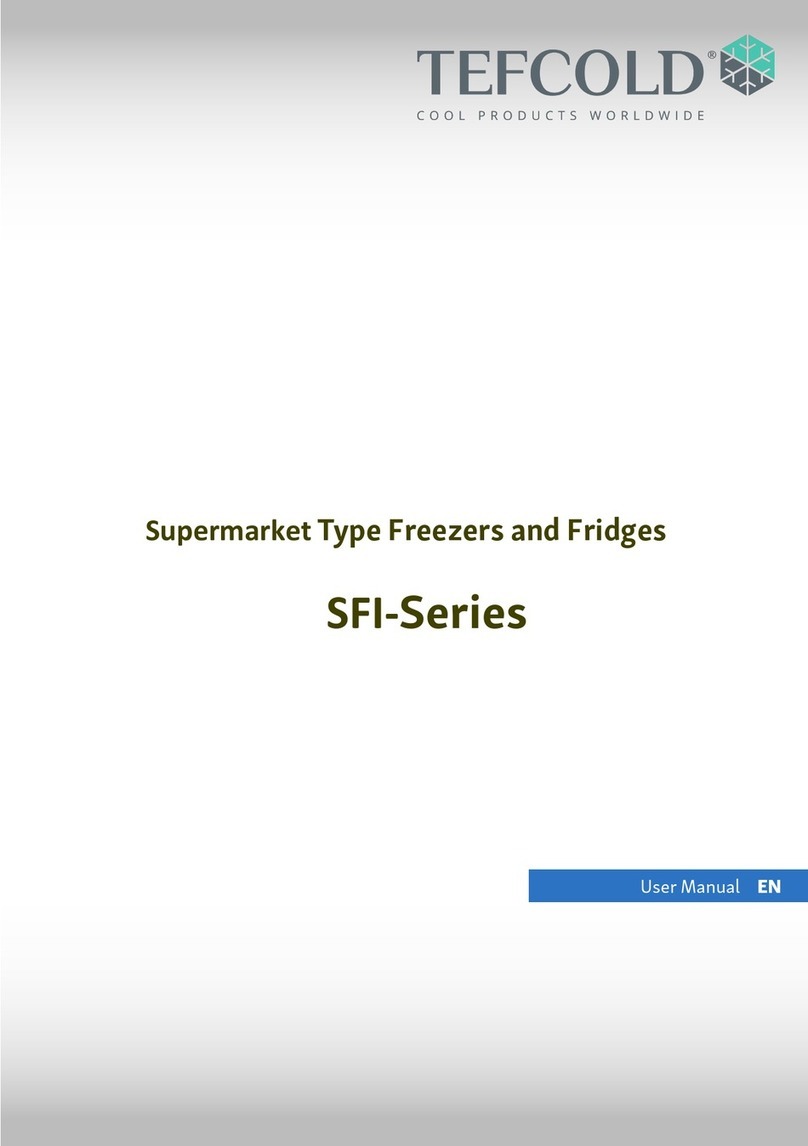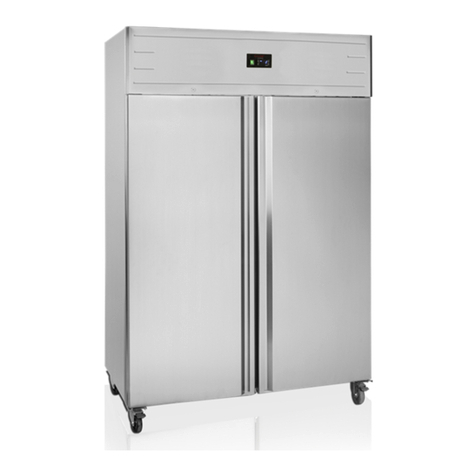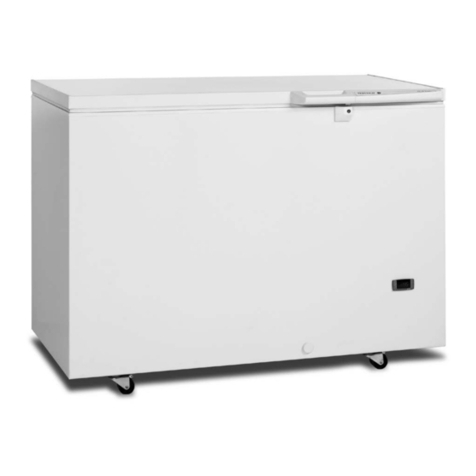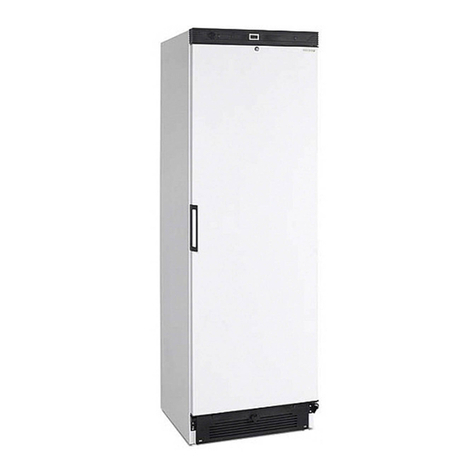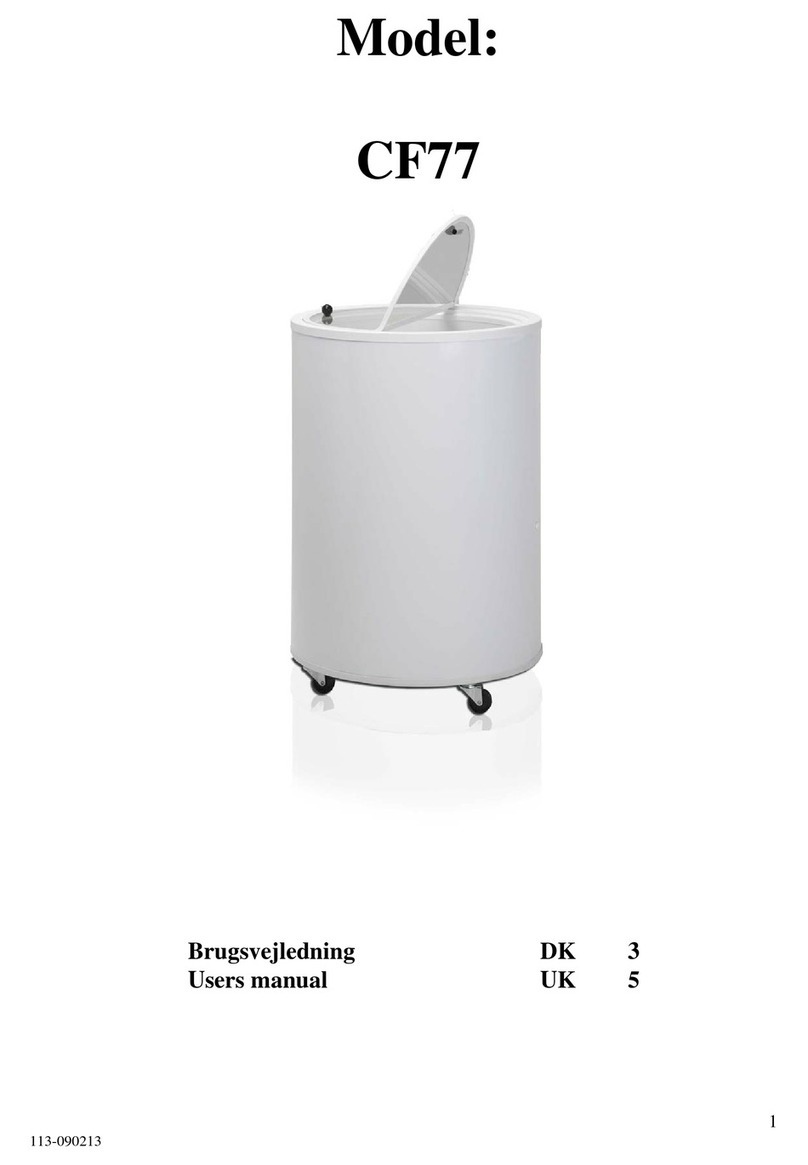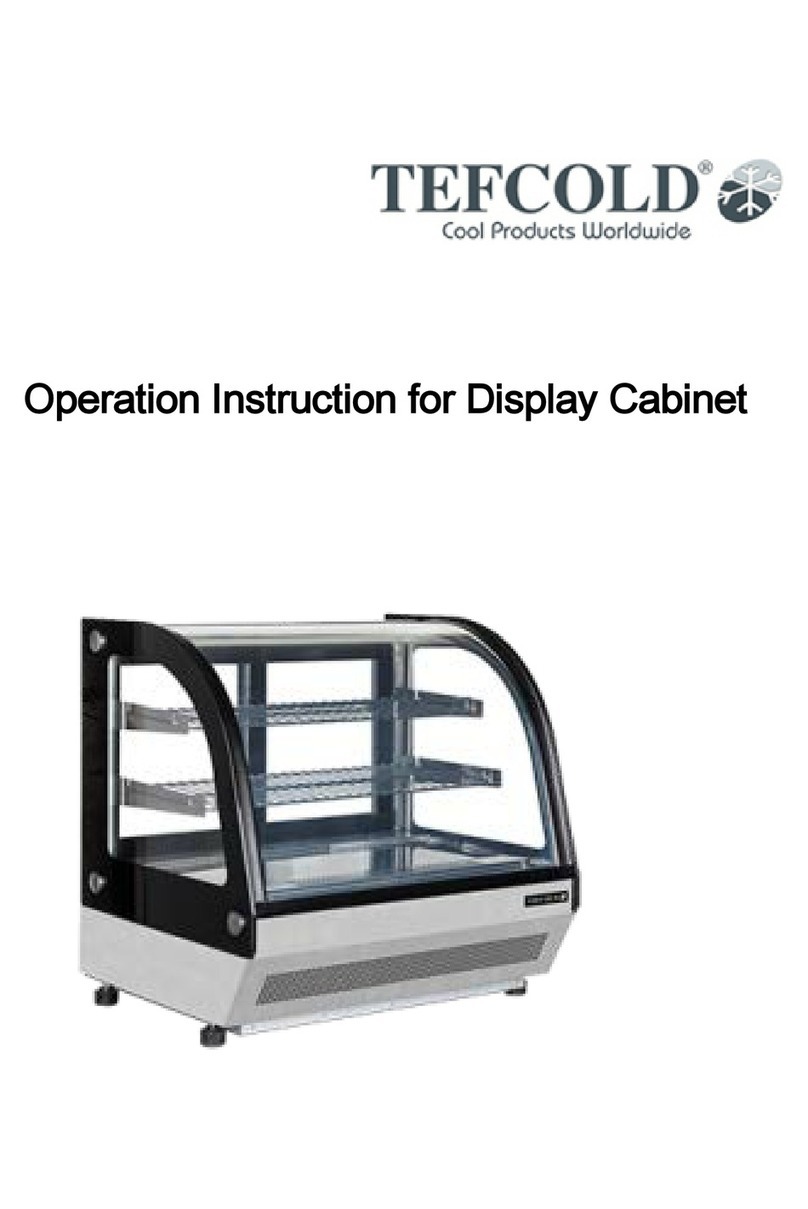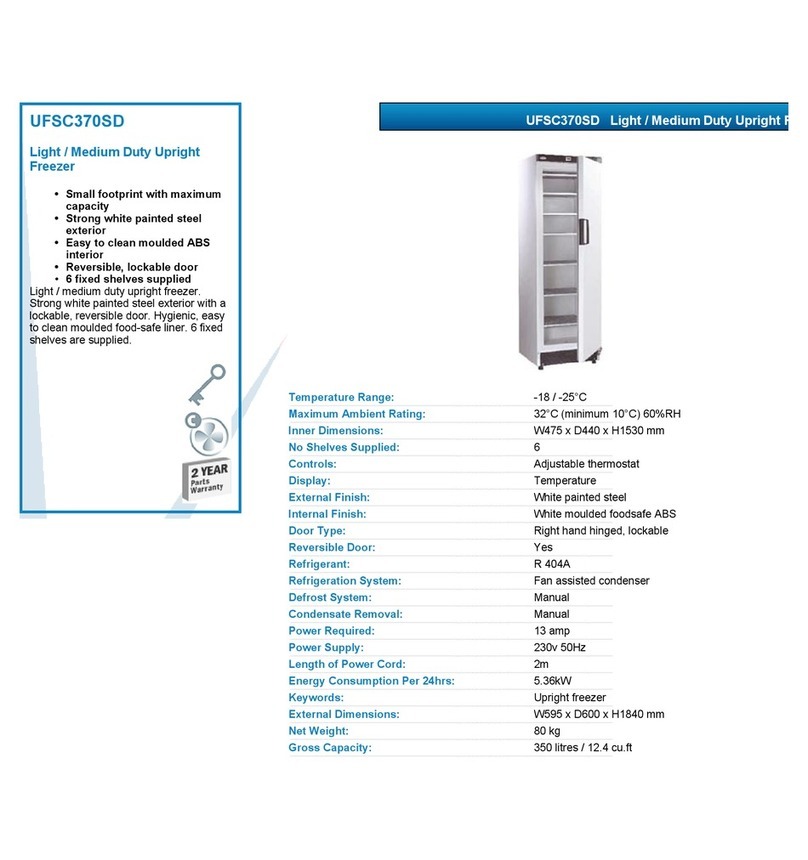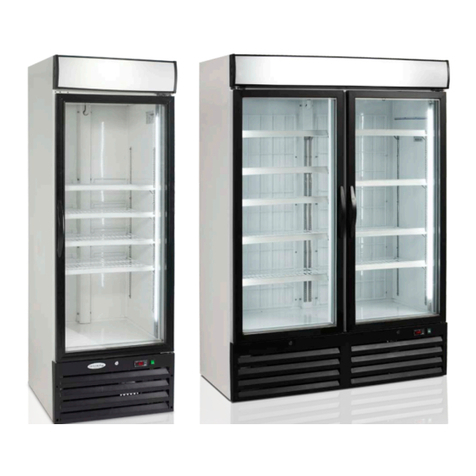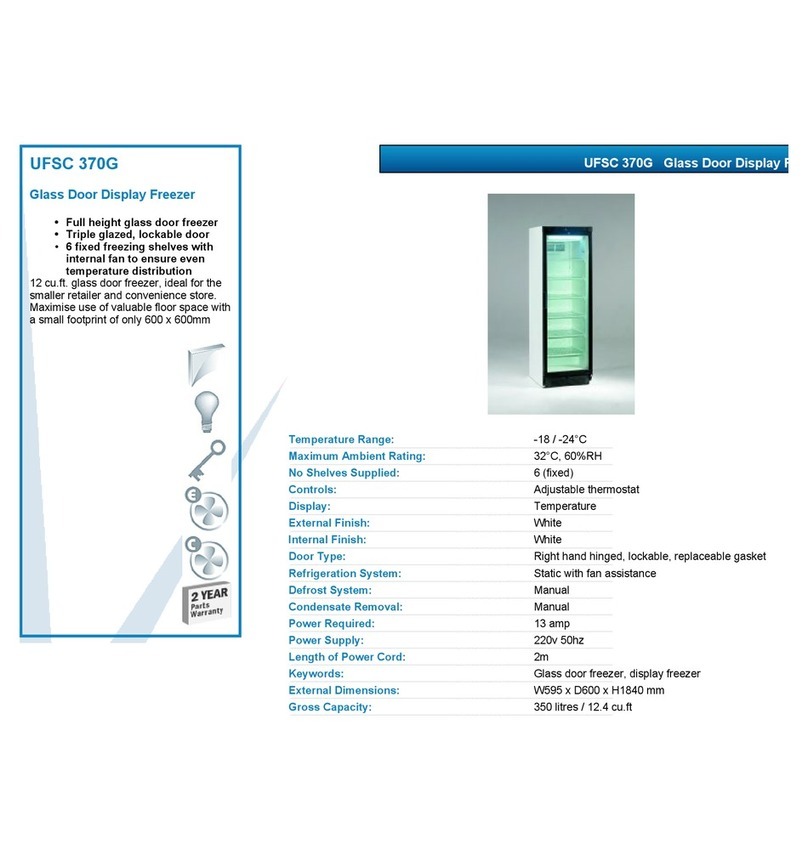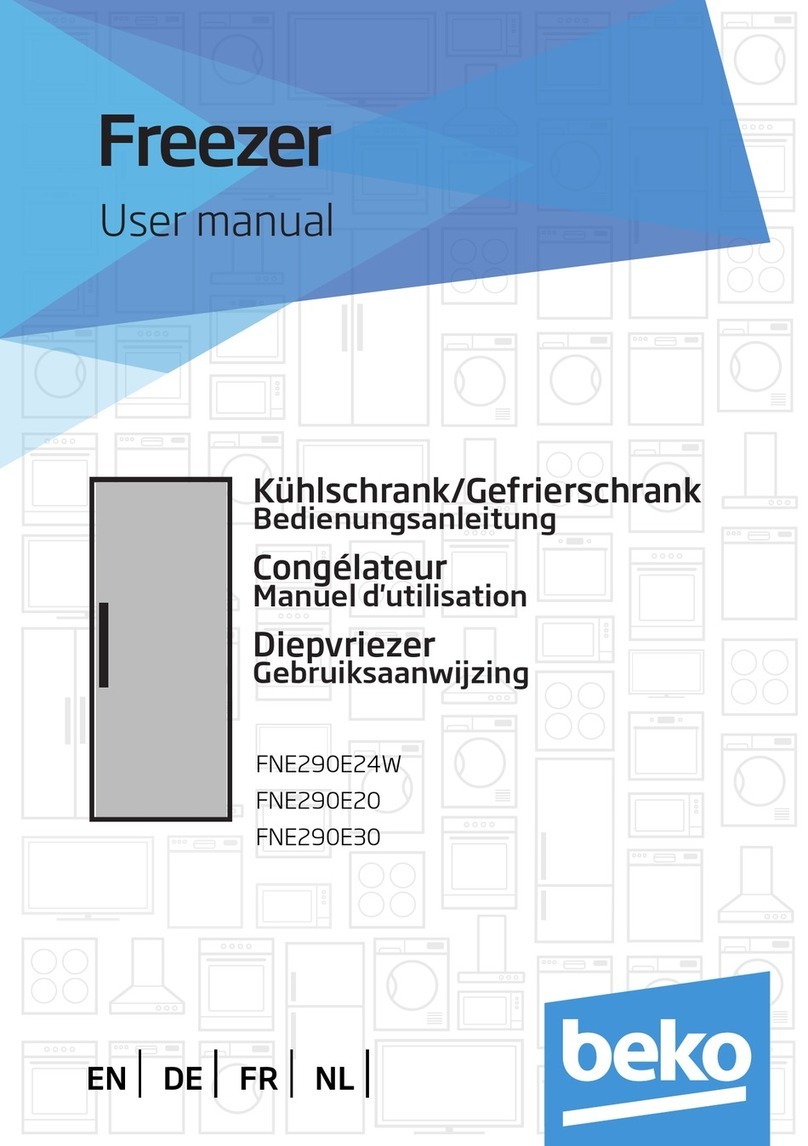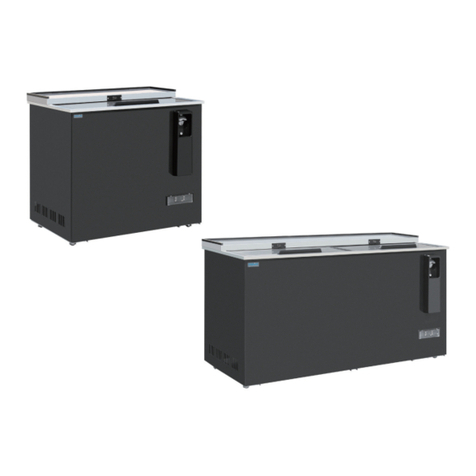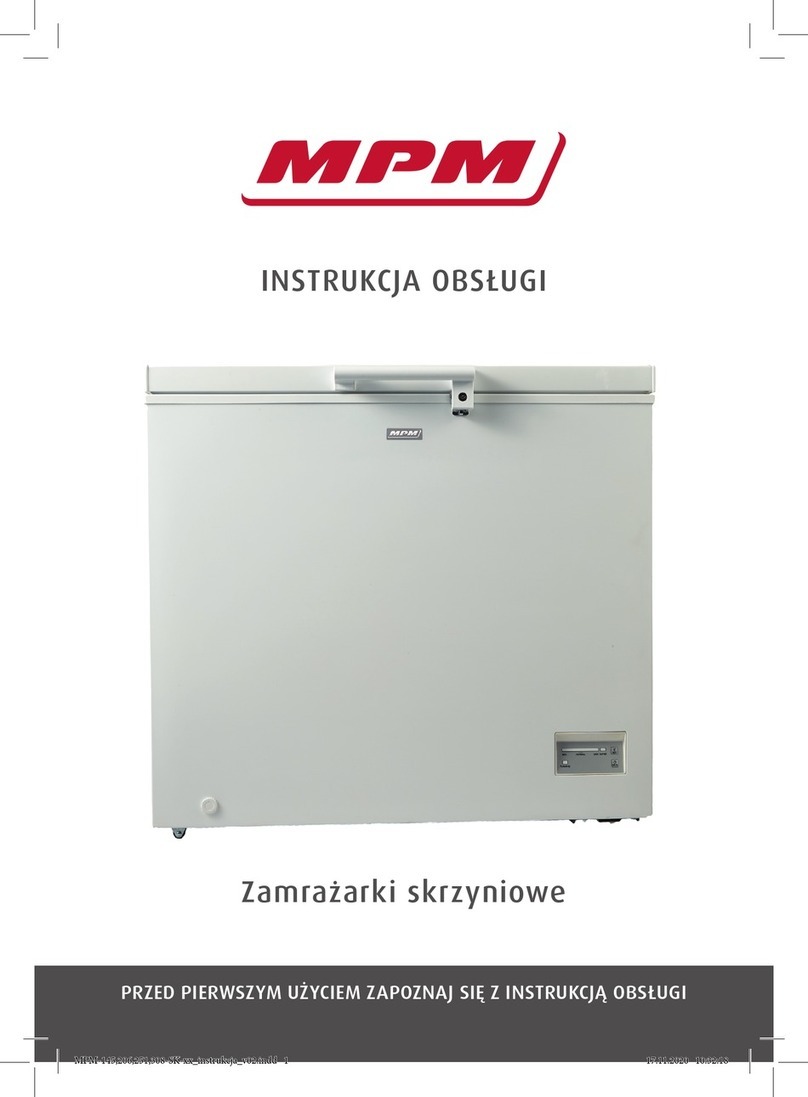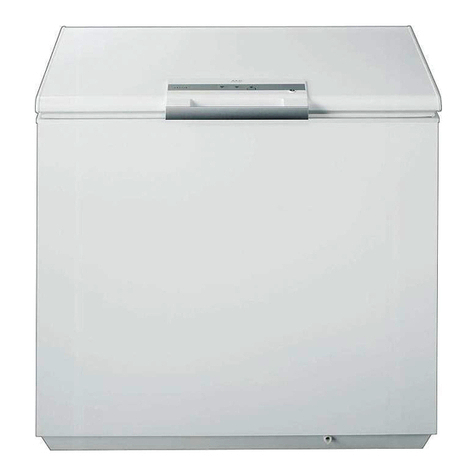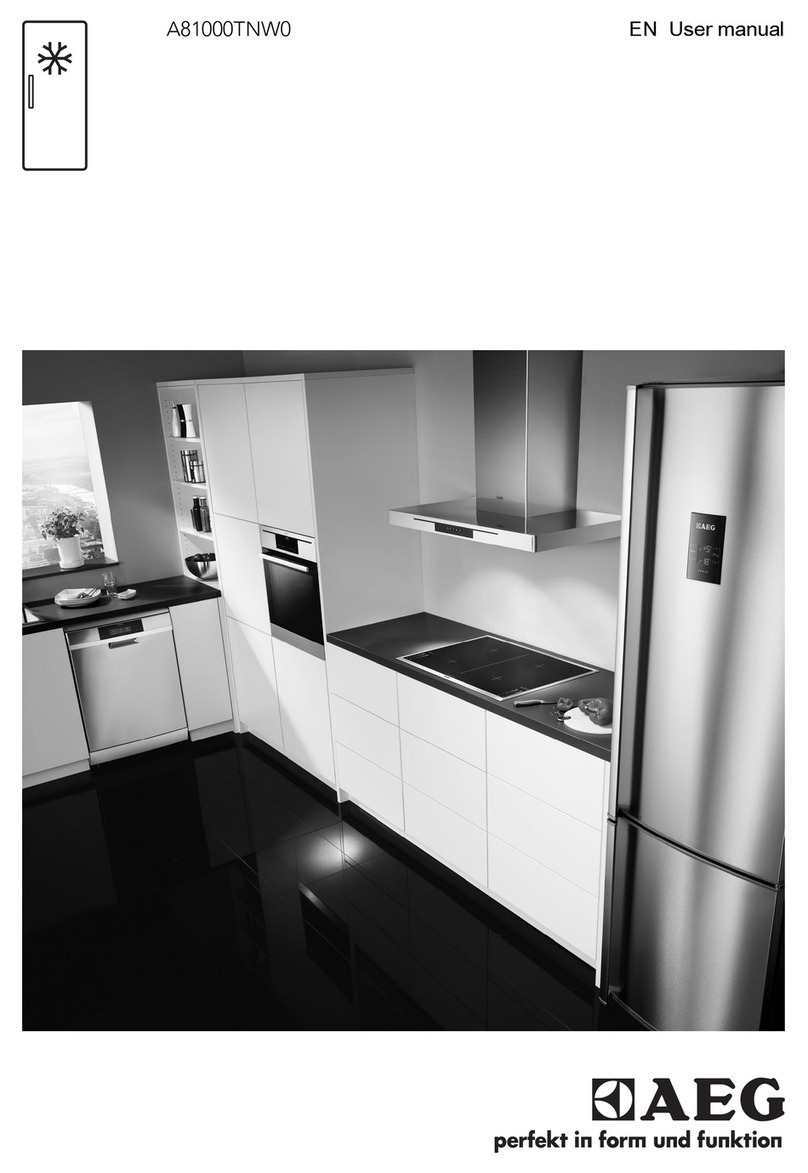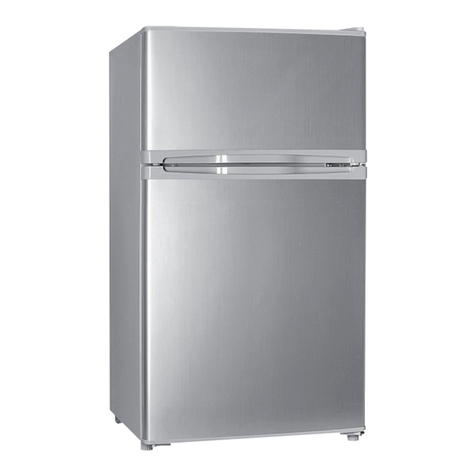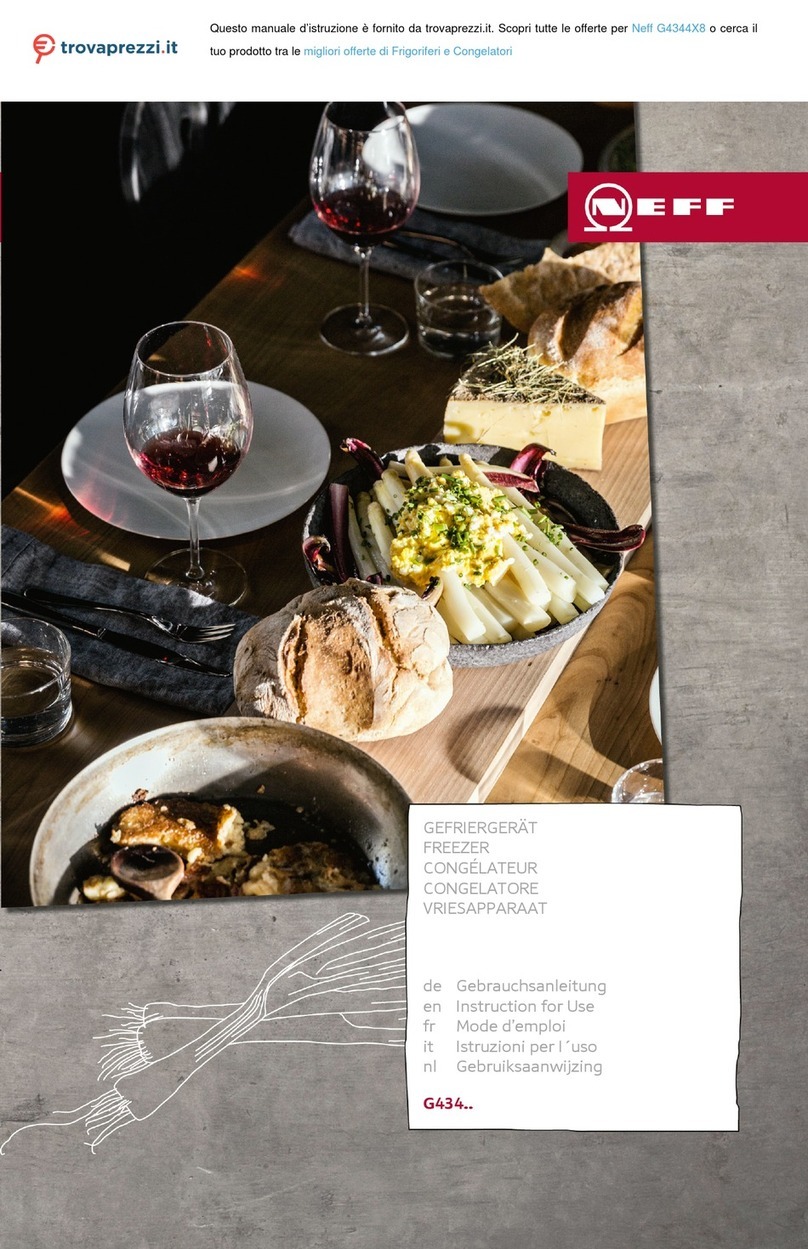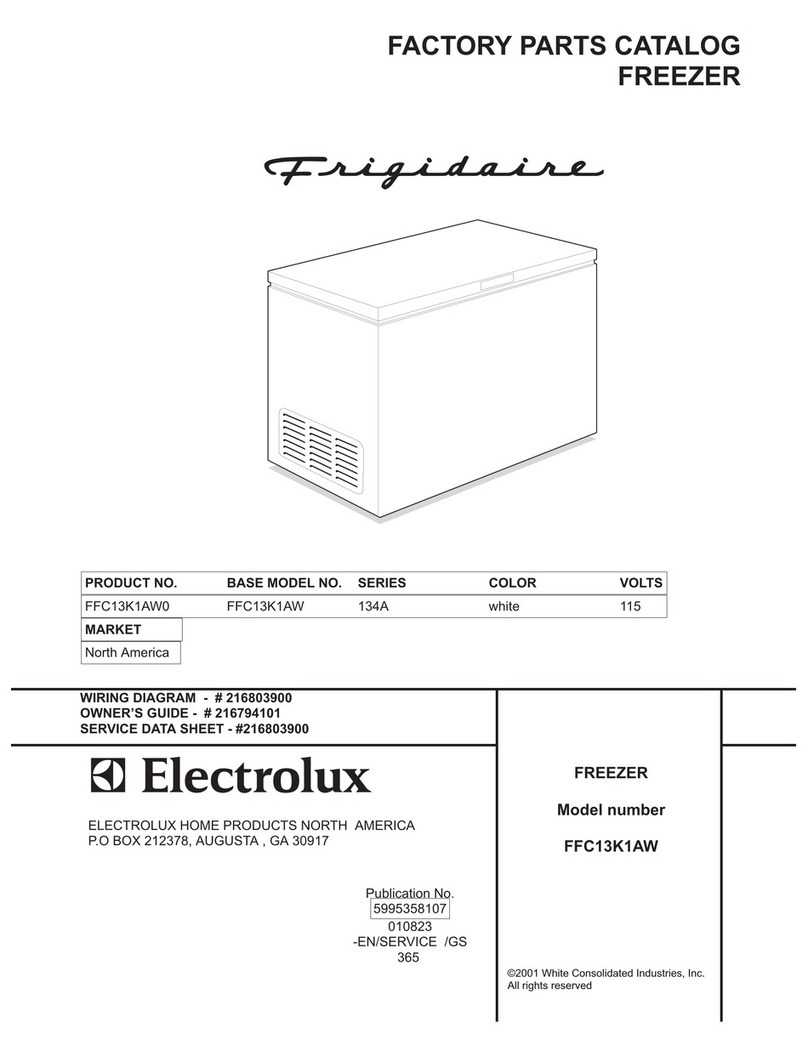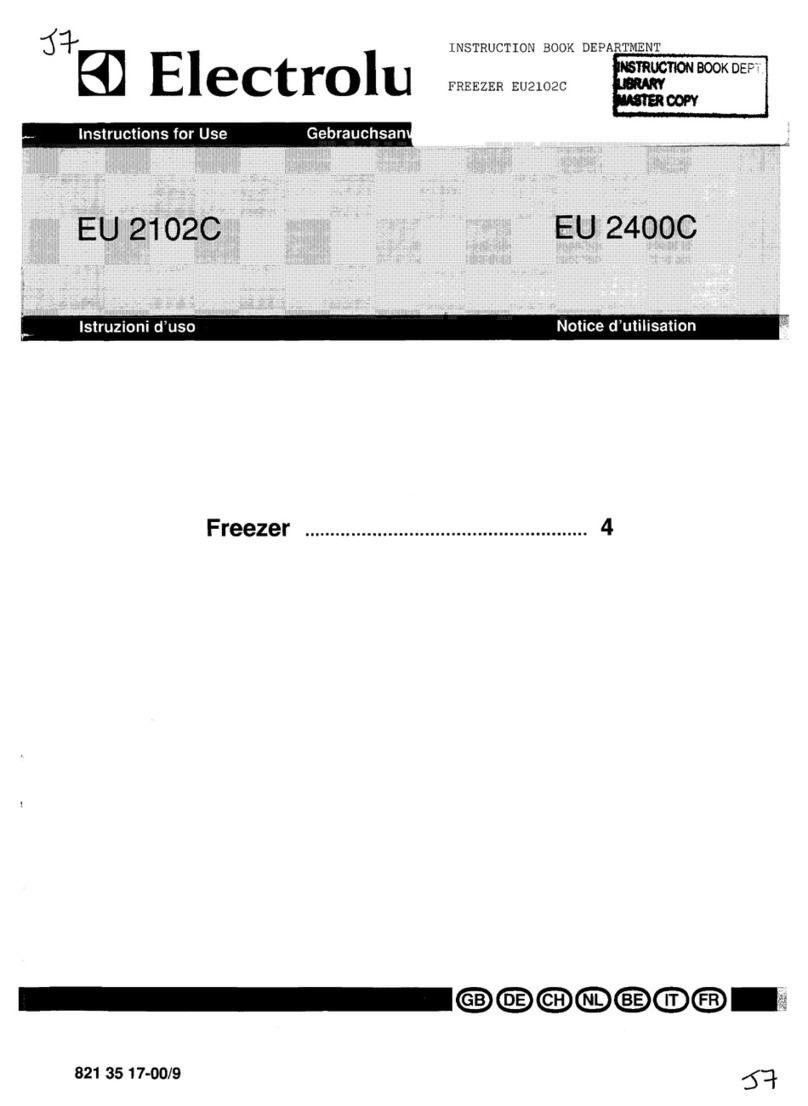
BLAST CHILLING CYCLE
7
With this operating modality the chiller keeps the temperature of the refrigerating compartment close
to zero during the entire chilling process in order to ensure a gradual drop in the temperature of the
product to +3 °C.In this way, ice crystals do not form on the surface of the product .This blast chilling
method should be used preferably for products that are not packed and whose physical/organoleptic
characteristics could be damaged by the formation of supercial ice (e.g. sh)
SHOCK FREEZING CYCLE
With this blast chilling modality the blast chiller maintains the temperature at a negative value below
-18 °C which is the end temperature of shock freezing .For shock freezing to be successful and fast,
food should be in small pieces, especially if it has a high fat content. The largest pieces should be
placed in central trays .If it takes longer than standard time to shock freeze and the sizes cannot
be reduced, decrease the quantity and precool the chiller compartment by starting an empty shock
freezing cycle before shock freezing the product.
CLEANING AND MAINTENANCE
Switch o the electrical connection at the socket.
The cabinet must be periodically cleaned. Clean the external and internal surfaces of the cabinet with
a light soap solution and subsequently wipe dry. External surfaces can be maintained using steel oil.
Do not spray the appliance with direct jets of water or using high pressure appliances.
Do not use iron wool. brushes or scrapers to clean the stainless steel as ferrous particles could be
deposited which ,on oxidizing, could lead to rust.
To remove hardened residues, use wooden or plastic spatulas or abrasive rubber pads.
Clean the condenser
Clean the condenser periodically.
As the ns of the condenser are very sharp, always wear protective gloves for the next phases.
Use protective masks and glasses in the presence of dust.
Whenever the condenser has a deposit of dust in correspondence with the ns, this can be
removed using a suction device or with a brush applied, using a vertical movement along the
direction of the ns.
No other instruments must be used, which may deform the ns and therefore the eciency of the
appliance.
